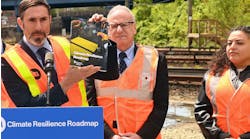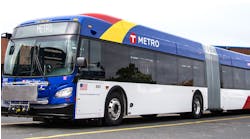The Northern Arizona Intergovernmental Public Transportation Authority (NAIPTA) kicked off the development of a new Five-Year Plan, which will take public and stakeholder input to shape the future of Mountain Line transit over the next five years.
The last Five-Year & Long-Range Plan was adopted by the NAIPTA Board of Directors in 2013. While several items from that Long-Range Plan are still under consideration, the new Five-Year plan will focus on the type of transit Flagstaff residents want over the next several years, within the confines of NAIPTA’s current budget. The plan is being developed by Jarrett Walker & Associates (JWA), a transit planning firm that has done similar projects in Boulder, Tucson, Houston, and Las Vegas.
This transit planning project is expected to raise some difficult and interesting choices about what kind of services Mountain Line provides, and in what areas. A key choice that will be explored is: Should Mountain Line focus its service in high-ridership areas, so that it can offer high frequency there? Or should Mountain Line spread out service so that most of Flagstaff has access to a little bit of transit, but frequencies are lower?
The planning process kicked off with a Stakeholder Outreach event on March 25 that brought together 25 community members (riders and non-riders, seniors and students, etc.) to delve further into the choice between higher frequency and higher coverage, given a fixed budget.
During this phase of the project, the public is invited to get engaged and provide feedback on two distinctive transit “alternatives.” The stark contrast of the two alternatives is designed to start a conversation and see where on the spectrum of options Flagstaff residents want their transit to land.


